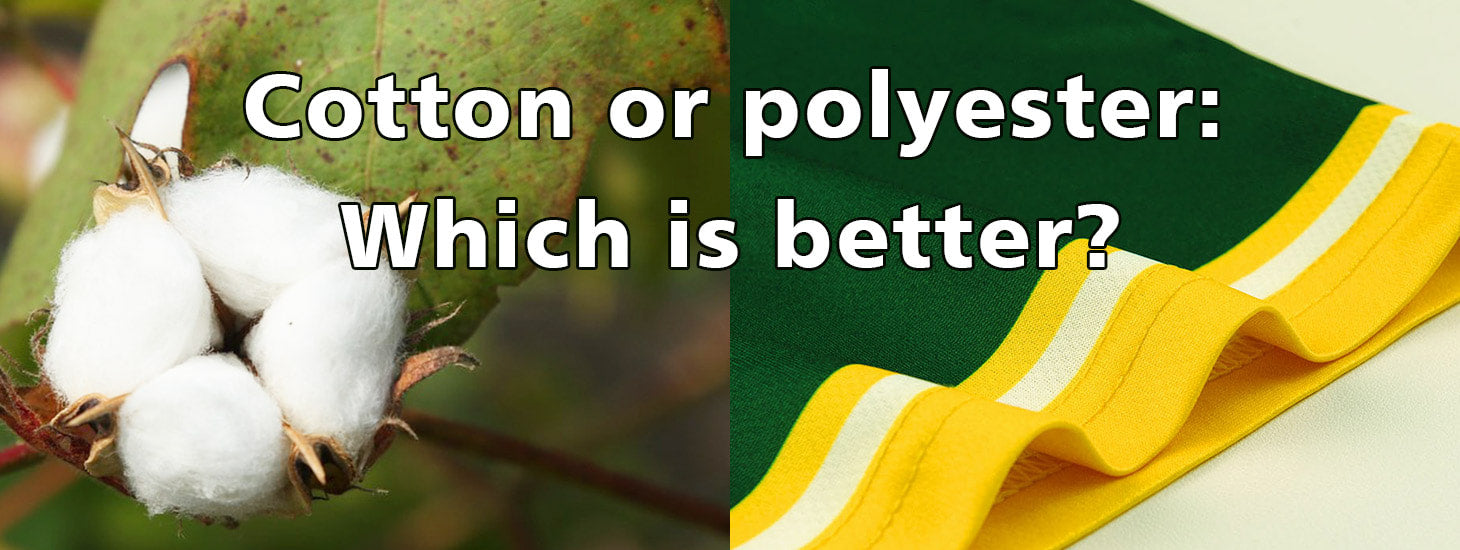Menu
-
-
- Home
-
Best Seller
-
Baseball
- Best Seller
- New Arrivals
- Classic Style
- Stripe Fashion
- Gradient Fashion
- Split Fashion
- Raglan Sleeves
- American Flag
- Graffiti Pattern
- Pullover
- Two-Button
- Rhombus
- City Edition
- Sleeveless
- Camo
- Color Block
- Texas State Flag
- Thorns Ribbed
- Christmas
- Aqua
- Black
- Brown
- Cream
- Crimson
- Dark Gray
- Gold
- Gray
- Green
- Kelly Green
- Khaki
- Light Blue
- Light Red
- Navy
- Neon Green
- Orange
- Pink
- Powder Blue
- Purple
- Red
- Royal
- Teal
- White
- Yellow
-
Football
- Best Seller
- New Arrivals
- Classic Style
- Drift Fashion
- Gradient Fashion
- Raglan Sleeves
- American Flag
- Camo
- Aqua
- Black
- Brown
- Burgundy
- Cardinal
- Gold
- Gray
- Green
- Kelly Green
- Light Blue
- Midnight Green
- Navy
- Neon Green
- Old Gold
- Olive
- Orange
- Panther Blue
- Pewter
- Pink
- Powder Blue
- Purple
- Red
- Royal
- Scarlet
- Silver
- Teal
- Vegas Gold
- White
- Yellow
-
Basketball
- Best Seller
- New Arrivals
- Classic Tops
- Reversible Tops
- Gradient Fashion Tops
- Graffiti Pattern Tops
- Split Fashion Tops
- Stripe Fashion Tops
- Classic Sets
- Reversible Sets
- Gradient Fashion Sets
- Graffiti Pattern Sets
- Color Block Sets
- Sequined Dress
- Backpack
- Aqua
- Black
- Blue
- Brown
- Cream
- Crimson
- Dark Gray
- Gold
- Gray
- Green
- Hunter Green
- Kelly Green
- Khaki
- Light Blue
- Light Pink
- Maroon
- Navy
- Neon Green
- Olive
- Orange
- Powder Blue
- Purple
- Red
- Royal
- Teal
- White
- Yellow
-
Soccer
-
Jacket
- Best Seller
- New Arrivals
- Classic Style
- Split Fashion
- Gradient Fashion
- Stripe Fashion
- Raglan Sleeves
- Graffiti Pattern
- Two Tone
- Waterproof Softshell
- Hoodie Jacket
- Color Block
- Full Zip
- City Connect
- Camo
- Christmas
- Aqua
- Black
- Brown
- Crimson
- Gold
- Gray
- Green
- Kelly Green
- Khaki
- Light Purple
- Midnight Green
- Navy
- Old Gold
- Olive
- Orange
- Pink
- Powder Blue
- Purple
- Red
- Royal
- Texas Orange
- White
-
Hockey
-
Hoodie
-
T-shirt
-
More
- Bulk Order Program
- +1 785-218-7244
- Login

Cotton Or Polyester: Which Is Better?
April 24, 2025 9 min read

The age-old debate between cotton and polyester often leaves shoppers torn between natural comfort and synthetic innovation. Cotton, a staple of wardrobes for centuries, promises breathability and a gentle touch, while polyester, born from modern chemistry, boasts durability, affordability, and performance-driven features. But in an era where sustainability and functionality collide, the question isn’t just about preference—it’s about purpose. Does one fabric truly outshine the other, or does the “better” choice depend on climate, lifestyle, and environmental priorities? Let’s unravel the threads of this complex comparison.
(Related: Why Breathable Fabric Matters in Sports Performance)
What’s on this page
Cotton or Polyester - The Biggest Differences
What is polyester
What is cotton
How are cotton and polyester fabrics made
Advantages and disadvantages of cotton and polyester
Feel and wearing experience
How durable are cotton and polyester fibers
Printing suitability of cotton and polyester fibers
Where is polyester or cotton more appropriate
How sustainable are cotton or polyester fibers
FAQ
Cotton or Polyester - The Biggest Differences
What is polyester?
Polyester, commonly known as "polyester", is a fiber synthesized from petrochemical raw materials. It is made by melting polyethylene terephthalate (PET) polymer and spinning it. It has high strength, wear resistance, wrinkle resistance, and other characteristics, and is widely used in clothing, home textiles, and industrial fields.

What is cotton?
Cotton is a natural plant fiber taken from the seed fluff of cotton plants. Its soft, breathable, and moisture-absorbing properties make it one of the most popular textile raw materials, often used to make underwear, bedding, and daily clothing.
How are cotton and polyester fabrics made?
How is polyester made?
Raw material extraction: Terephthalic acid (PTA) and ethylene glycol (MEG) are extracted from petroleum.
Polymerization reaction: PTA reacts with MEG to produce polyester chips.
Melt spinning: After the chips are heated and melted, they are extruded into filaments through spinnerets and cooled to form fibers.
Post-processing: The fiber is stretched, curled, and other processes to enhance its performance, and finally made into yarn.
How is cotton made?
Planting and picking: After the cotton plant matures, the cotton bolls are picked mechanically or manually.
Ginning and deseeding: Remove seeds and impurities from cotton fibers to obtain pure cotton fibers.
Carding and spinning: The fibers are combed and stretched and then spun into cotton yarn.
Weaving and finishing: The yarn is woven into fabric and treated with bleaching, dyeing, and other processes.
Advantages and disadvantages of cotton and polyester
Advantages of cotton
Breathable and moisture-absorbent: Suitable for hot weather or sensitive skin.
Natural and environmentally friendly: Biodegradable, with low pollution in the production process.
Soft and skin-friendly: Comfortable to the touch, not prone to allergies.
Disadvantages of cotton
Easy to wrinkle and shrink: Need to be ironed after washing, and may shrink by 5%-10%.
Average durability: Long-term friction is prone to pilling, and it is prone to mold in a humid environment.
Advantages of polyester
Wear-resistant and wrinkle-resistant: Suitable for sportswear or outdoor equipment that is frequently worn.
Quick drying and easy care: no shrinkage, not easily deformed, and quick drying after machine washing.
Low cost: low price for industrial production, suitable for large-scale use.
Disadvantages of polyester
Poor breathability: easy to get stuffy, easy to stick to the body after sweating.
Environmental issues: dependent on petroleum resources, difficult to degrade, and serious microplastic pollution.
Feel and wearing experience
Cotton
Cotton fabrics are celebrated for their natural softness and breathability, making them a go-to for everyday comfort. Depending on the weave—whether denim, flannel, or jersey—cotton can range from crisp to cozy, but all variants maintain a gentle, skin-friendly texture. Ideal for warm climates, cotton allows air to circulate freely, preventing that "sticky" feeling. However, pure cotton garments tend to loosen slightly with wear and absorb moisture rather than wicking it, which can leave fabric damp during heavy sweating. While perfect for relaxed, loose-fitting styles like T-shirts or loungewear, cotton’s slow-drying nature and lack of stretch make it less practical for form-fitting activewear.
Polyester
Polyester boasts a sleek, lightweight feel, often compared to silk but with a synthetic smoothness. Its moisture-wicking properties excel in pulling sweat away from the skin, ensuring quick evaporation—a key reason it dominates sportswear and outdoor gear. Though less breathable than cotton, modern polyester blends are engineered with micro-weaves or mesh panels to enhance airflow. The fabric holds its shape impeccably, resisting wrinkles and shrinkage even after repeated washes. While pure polyester can feel clingy or static-prone in dry conditions, blending it with spandex adds stretch and reduces irritation, creating versatile options for everything from sleek athleisure to durable travel apparel. In cooler weather, polyester’s heat-retention quality provides lightweight warmth without bulk.
Key Differences in Wearability
Fit: Cotton offers a relaxed drape, while polyester tends to hug the body unless designed for loose styles.
Climate Adaptability: Cotton thrives in heat; polyester balances warmth and moisture management.
Care: Polyester requires minimal upkeep, whereas cotton may need frequent ironing and shrinkage precautions.
In short, cotton prioritizes natural comfort, while polyester delivers performance-driven versatility. Choose based on activity, climate, and desired maintenance!
How durable are cotton and polyester fibers?
Cotton: Naturally Strong, But Sensitive to Stress
Cotton is a tough natural fiber, especially when it's high quality and tightly woven. It's known for holding up well under normal day-to-day use, and with proper care, cotton garments can last for years. That said, cotton is more vulnerable to damage from repeated high-heat washing, aggressive detergents, or over-drying. These factors can cause shrinkage, fading, and fiber breakdown, especially in 100% cotton pieces.
It also tends to stretch out of shape more easily over time, especially in items like collars or cuffs. If you're rough on your clothes or wash them frequently at high temperatures, cotton may show signs of wear sooner than synthetic fabrics.
Polyester: Engineered for Longevity
Polyester, being a synthetic material, is designed for durability. It resists shrinking, fading, and wrinkling far better than cotton. Because it doesn't absorb water easily, polyester is also less likely to stain, and it's less prone to losing shape over time. This makes it a favorite for high-activity apparel, work uniforms, and gear that needs to endure regular wear and repeated washes.
Polyester’s molecular structure makes it naturally resistant to most forms of damage that would weaken natural fibers. Even after dozens of washes and heavy use, polyester fabrics tend to retain their color, shape, and texture.
Printing suitability of cotton and polyester fibers
Cotton
Cotton’s natural fiber structure makes it a versatile canvas for printing, particularly suited for direct-to-garment (DTG) and screen printing. DTG excels on 100% cotton fabrics, producing soft, opaque designs ideal for intricate artwork or photorealistic prints. Thinner cotton materials like T-shirts yield crisp results, while heavier fabrics (e.g., sweatshirts) may require extra ink layers for vibrancy. Screen printing remains a cost-effective choice for bulk orders, offering unmatched durability, though setup costs make it less practical for small batches.
Cotton’s absorbency ensures dyes bond deeply, resisting fading over time. However, its tendency to shrink post-wash demands pre-treatment to maintain print alignment. Popular applications include casualwear, promotional apparel, and organic designs prioritizing a vintage or “lived-in” aesthetic.
Polyester
Polyester’s synthetic fibers require specialized techniques like dye-sublimation or heat-transfer printing to achieve vibrant, long-lasting results. Unlike cotton, polyester repels water-based inks, making DTG unsuitable. Instead, sublimation uses heat to infuse dyes directly into the fabric, creating bold, fade-resistant designs with a seamless finish—perfect for all-over prints or athletic gear.

While traditional methods like screen printing struggle with polyester’s low absorbency, modern advancements allow pigment-based inks or digital printing on treated polyester blends. These options balance affordability and quality for smaller runs. Polyester’s wrinkle-resistant nature and quick-drying properties make it ideal for performance wear, swimsuits, or accessories requiring sharp, high-contrast graphics.
Popular polyester products available on Kxkshop include:
Fully Customized Personalized Baseball Jerseys
Custom football jerseys that are both personalized and functional
Customized basketball jerseys for adults and kids

Key Considerations
Color Intensity: Polyester excels in bright, saturated hues; cotton offers softer, matte finishes.
Durability: Sublimated polyester resists cracking; screen-printed cotton withstands heavy washing.
Cost: Cotton DTG is budget-friendly for small orders; polyester sublimation becomes cost-effective at scale.
Choose cotton for organic textures and easy customization, or polyester for technical performance and eye-catching vibrancy—each shines in its niche!
Where is polyester or cotton more appropriate?
Polyester
Polyester thrives in environments demanding performance, durability, and climate adaptability. Its synthetic resilience makes it a top choice for:
Active & Outdoor Gear: Perfect for sports like cycling, running, or team athletics, where moisture-wicking, quick-drying, and stretch are critical. Cold-weather hiking jackets with polyester liners retain warmth without bulk.
High-Intensity Workouts: Gym wear and compression apparel benefit from polyester’s elasticity and odor resistance, keeping wearers dry during repetitive motion.
Travel & Adventure: Backpacks, swimwear, and UV-protective clothing leverage polyester’s lightweight, wrinkle-free, and fade-resistant qualities.
Uniforms & Team Apparel: Sublimation printing on polyester delivers vibrant, long-lasting designs for sports teams or corporate uniforms requiring bold branding.
Best Climates:
Temperate to Cold: Polyester’s moisture-wicking properties prevent chilling during breaks in cooler weather.
Humid Conditions: Quick-drying ability reduces discomfort in sweaty or rainy environments.
Cotton
Cotton shines in casual, breathable, and comfort-focused settings, particularly where natural feel and breathability are priorities:
Everyday Casualwear: T-shirts, loungewear, and denim excel in cotton’s soft, airy texture, ideal for hot, dry climates like the Mediterranean or desert regions.
Home & Sleepwear: Bedding, towels, and pajamas capitalize on cotton’s hypoallergenic properties and moisture absorption for cozy, irritation-free use.
Sensitive Skin Needs: Baby clothing, organic apparel, or medical textiles prioritize cotton’s gentle, non-irritating fibers.
Artisanal & Vintage Styles: Hand-dyed fabrics, tie-dye, or distressed looks benefit from cotton’s absorbency and matte finish.
Best Climates:
Hot & Arid: Cotton’s breathability cools the skin in scorching temperatures (e.g., Southwest U.S., Middle East).
Moderate Humidity: Avoids clinginess while absorbing light sweat in regions with seasonal heat (e.g., Southeast Asia monsoons).
Hybrid Solutions:
For transitional climates (e.g., Pacific Northwest) or versatile wear, cotton-polyester blends merge breathability with durability, ideal for work uniforms or casual athleisure.
How sustainable are cotton or polyester fiber?
The debate over cotton and polyester’s sustainability hinges on their environmental footprints, resource demands, and circular potential. Here’s a breakdown across key criteria:
1. Environmental Impact
Cotton
Biodegradability: Pure cotton decomposes naturally, reducing landfill waste.
Water Footprint: Conventional cotton is notoriously thirsty—2,700 liters of water per T-shirt, often draining freshwater reserves in arid regions.
Chemical Use: Heavy reliance on pesticides and fertilizers (25% of global insecticides target cotton) harms ecosystems and farmworkers.
Microfiber Pollution: Releases microfibers during washing, though organic cotton sheds fewer and degrades faster than synthetics.
Polyester
Fossil Fuel Dependency: Derived from petroleum, contributing to carbon emissions and resource depletion.
Microplastic Crisis: Sheds non-biodegradable microplastics into waterways, harming marine life. Up to 35% of ocean microplastics come from synthetic textiles.
Energy-Intensive Production: Manufacturing requires high energy, though recycled polyester (rPET) cuts emissions by 30-50% compared to virgin polyester.

2. Circular Economy Potential
Cotton
Recycling Limits: Mechanical recycling shortens fibers, requiring blending with virgin cotton or synthetics. Chemical recycling (e.g., lyocell) is emerging but costly.
Organic & Fair Trade: Certifications like GOTS ensure reduced water/chemical use and ethical labor practices, boosting sustainability.
Polyester
Infinite Recycling: rPET (from plastic bottles or textile waste) can be recycled repeatedly without quality loss, reducing reliance on virgin oil.
Closed-Loop Systems: Brands like Patagonia use recycled polyester for jackets, diverting waste from landfills.
Innovation: Enzymatic recycling and biodegradable polyesters (e.g., PHA) are in development but not yet scalable.
3. Social & Ethical Considerations
Cotton
Labor Practices: Conventional cotton farming often involves exploitative labor, child workers, and unsafe conditions. Fair Trade cotton addresses these issues but costs more.
Land Use: Monoculture farming degrades soil, while regenerative cotton farming restores biodiversity.
Polyester
Fast Fashion Link: Cheap polyester fuels overconsumption and textile waste (92 million tons annually).
Worker Health: Petrochemical production exposes workers to toxins, though rPET reduces this risk.
4. Climate Resilience
Cotton
Climate Vulnerability: Droughts and pests threaten yields, pushing farmers toward GMO seeds and chemicals.
Carbon Sequestration: Regenerative cotton farming can store CO2 in soil, offsetting emissions.
Polyester
Carbon Emissions: Virgin polyester production emits 5.5 kg CO2 per kg of fabric. rPET cuts this by 40%.
Durability Advantage: Longer lifespan reduces replacement frequency, lowering overall footprint.
Which Is More Sustainable?
Choose Organic Cotton if:
Prioritizing biodegradability, reduced chemicals, and ethical labor.
Operating in water-rich regions or supporting regenerative farming.
Choose Recycled Polyester if:
Prioritizing circularity, waste reduction (e.g., upcycling bottles), and high-performance durability.
Addressing microplastic pollution with washing filters (e.g., Guppyfriend bags).
Hybrid Solutions: Blends (e.g., 50% organic cotton + 50% rPET) balance comfort, durability, and eco-impact.
FAQ
Q1: Is it cooler to wear cotton or polyester in summer?
A: Cotton is more breathable and sweat-absorbent, suitable for hot weather; polyester is ideal for quick-drying fabrics.
Q2: Which material is more environmentally friendly?
A: Organic cotton and recycled polyester are both environmentally friendly options, but they must be selected based on the usage scenario.
Q3: Will polyester clothes pill?
A: Low-quality polyester is prone to pilling, and high-density weaving or blended fabrics can improve this.
Q4: What are the benefits of blending cotton and polyester?
A: Combining the comfort of cotton with the durability of polyester, it is commonly found in shirts and sheets, reducing wrinkles and increasing lifespan.
Q5: Which is more breathable—cotton or polyester?
Cotton is more breathable, but polyester dries faster.
Q6: Is polyester safe for sensitive skin?
It can be, but cotton is generally the safer bet for sensitive skin.
Q7: Can polyester shrink like cotton?
No—polyester is much more resistant to shrinkage.
Q8: Which fabric is easier to print on?
Polyester is best for sublimation, cotton is better for screen printing.
Leave a comment
Comments will be approved before showing up.
Also in News

How to Dress Up Your Easter in Pastel Colors?
April 10, 2025 3 min read
From pastel baseball jerseys, pastel nails, and DIY pastel Easter eggs to pastel Easter home decorations, we will take you into the world of pink Easter.

Five Recommended Custom Mother's Day Gifts
April 08, 2025 3 min read
This article recommends meaningful customized Mother's Day gifts for you: a crocheted shawl, a customized jacket, or a homemade dinner are all perfect gifts.

7 Days, 7 Looks: The Ultimate Guide to the Sandwich Method Outfit
April 08, 2025 3 min read
Simply put, it is like making a sandwich, using colors or elements that echo each other as "bread" and stacking bright "fillings" in the middle to easily create a sense of layering! This little trick will make sure your outfits look balanced and cohesive while giving you plenty of room to play with colors and textures.
